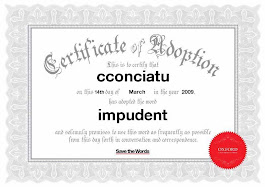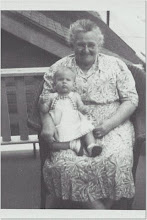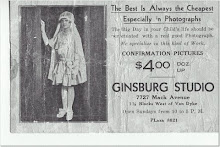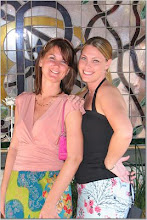When this beautiful postcard was mailed, 100 years ago, Memorial Day was called Decoration Day, a day to pause and remember both the Union and Confederate soldiers who died in the Civil war. Today, after many other wars, we remember all of the soldiers who gave their lives for our Country. "Lest We Forget", May 30th (now the last Monday in May" was designated as the day of remembrance.
William LaKoske 1925 -1994
This is my Uncle, Bill La Koske. The picture was taken around 1943 while he was in boot camp in Ft. Hood Texas. He is 17 years old.
I know little about Uncle Bill's time in the service. We were instructed to never ask him any questions about his experiences during WWII. I've managed to put a few bits and pieces together though.
He took his basic training at Ft Hood, Texas, and was still there in October of 1943 when my parents took a train to visit him while on their honeymoon.
I enlarged the patch on his left arm, and I also remembered an ashtray he had with the same insignia.
It is the insignia of the US Army Tank Destroyer Unit.
At the time, Fort Hood was a training center for the TDU, and I found this on line:
"The mission of the Tank Destroyer Unit Training Center became that of training tank destroyer units to the point of blotting out and erasing any fear of armored forces; establishing superiority in maneuvering and gunfire.
The specialized training program for TDs provided for 19 weeks of training. 6 weeks of basic and 13 weeks technical and tactical training. The basic training was comparable to that of a replacement training center."
At some point, after the D-Day invasion, and on the heels of the Battle of the Bulge Uncle Bill and his battalion were in France and possibly fought their way as far as Belgium. His job was manning a machine gun attached to the back of a Jeep. During heavy fighting against the Germans, Uncle Bill and several other men were forced to take cover inside a barn. The Germans destroyed the barn with canon fire and a beam fell, pinning Uncle Bill at mid-section to the ground. The other men were killed. He remained there for 2 days and was near death by the time he was rescued. He recuperated in Colorado for about 18 months, was awarded the Purple Heart, and then returned home.
Mom spoke once of the day the telegram came informing his mother, Julia that Uncle Bill was injured. Other than a short telegram, families had no way of knowing anything further about the fate of their husband, brother or son.
Today, wars are fought right on television. Soldiers keep in touch on cellphones and computers. At that time, communication except by the soldier himself, was non existent. Since Uncle Bill was badly injured, it may have been weeks before they received further word about his condition. They could only wait for a letter or for another telegram informing them of his death. Luckily that 2nd telegram never came.
(A very special force of WACS went to France in the heat of battle to make sure mail moved to and from the US. The Army knew how important communication was for morale here and abroad. I'll tell you all about them next week.)
 |
| Fizsimmons Army Medical Center, Aroura, Colorado |
A little more detective work: The Fitzsimmons Army Medical Center is most likely the hospital where Uncle Bill was treated and rehabilitated. It was built during WWI primarily for soldiers with TB and malaria and has always been considered an excellent hospital. It closed just within the past few years, is being updated and will reopen as a private hospital.
Joe and Del and Del's baby brother Bill
Uncle Bill is standing on the steps of my Grandparent's house on Holcomb St. in Detroit in this photo. He is with my parents, Joe and Del. The photo is undated, so I don't know whether he was on leave before going overseas or had just returned from Colorado. My best guess is that he was given leave after he completed his training. February/March 1944 would make sense - based on the winter coats, and the fact that Mom's coat is unbuttoned as opposed to everyone else's. Which means she's probably a few months preggers with my brother Joe.
Uncle Bill was my Godfather and a really wonderful Uncle. He had a great sense of humor and was the main instigator of fun and frolic among the children at the dinner table.
Although he was fortunate to survive the war he, like most soldiers, suffered memories of the horror of it for the rest of his life. Along with a strange fear of raisins.
While we enjoy this long Memorial Day weekend, let's take time to remember those who died in and of War.
For more Postcard Friendship Friday go HERE
For more Sepia Saturday stories go HERE


















































.JPG)




































